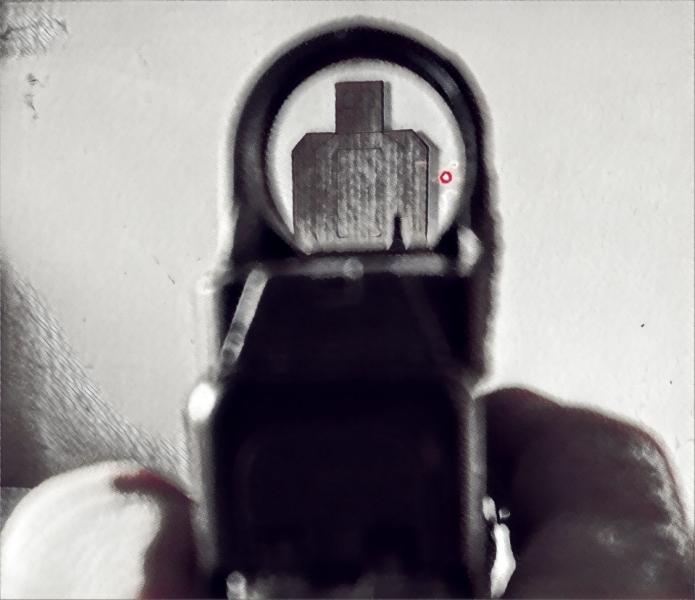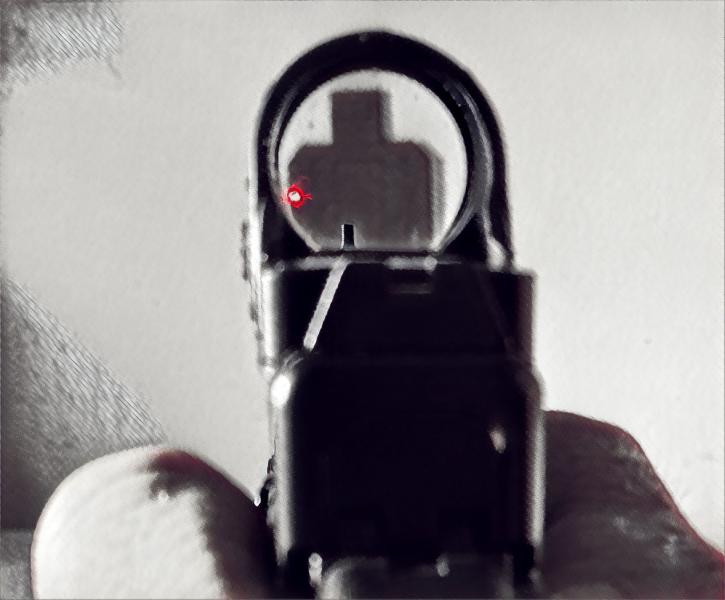This is a test for attaching pictures. If it is messed up I apologize in advance.
When it comes to framing or gross sight picture or whatever they are going to call it next week, one has to consider the factors of distance and target size as well as the size of the optic window/body.
The concept of framing as a successful and consistent technique requires the acceptable hit area of the target to be larger than (or at least equal to) the perceived size of the optic window at the given distance. For example, a USPSA or IDPA target is perceived as larger than most if not all optic window at five yards, so framing would make for a likely hit. In fact, at 5 yards, most optic windows are only slightly larger than the “A” zone, so you’re looking at A/C accuracy - This is based on my guesstimating in my house because I don’t have any full-size USPSA targets here and don’t use them super often.
Now reference my reduced-size practice USPSA below - The full dimensions are 9 3/4” tall by 6” wide. the pictures represent me standing approximately 11 feet (3.6 yards) from the target. The target is smaller than the optic window. So if I bring up the optic over the target and don’t see a dot there... that pretty much means it’s not on the target, which means a miss on THAT target at THAT distance. A full size target will change the distances at which we can expect a hit using framing or a gross sight picture.
Shooting a 2” dot at 3 yards will be frustrating to those not seeing a reticle. Shooting a B-8 at five yards, even out to the 8 ring for most people, will be frustrating to those not seeing a reticle. Shooting any human-like target at around 10yds beyond without seeing a reticle is going to be frustrating and probably a liability issue.
The pictures show a “framed” optic, but the dot is at the far lateral extension of the window, indicating a potential point of impact while “framing”... and for those actually doing this, what the “feel” of a miss is going to be. The same can be done vertically. This can help with presentation and kinesthetic awareness of what “right feels like”, but it also illustrates (depending on the optic and shooter), the limits of what framing can do. I would hope that any good optic program would address this reality.





 Reply With Quote
Reply With Quote



